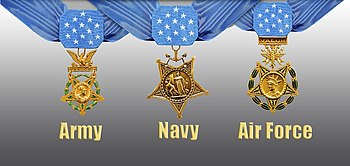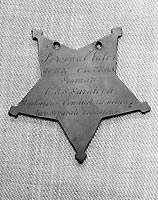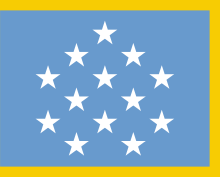The Crow (Version Two) theme by Daniel Keen
Download: TheCrowV2.p3t

The #1 spot for Playstation themes!
The Crow (Version Two) theme by Daniel Keen
Download: TheCrowV2.p3t
Medal of Honor theme by Dennis “F-Rott” Ferrand
Download: MedalofHonor_3.p3t

(7 backgrounds)
| Medal of Honor | |
|---|---|
 Medals of Honor of three of the six military departments | |
| Type | Military medal with neck ribbon (decoration) |
| Awarded for | Conspicuous gallantry and intrepidity at the risk of life above and beyond the call of duty[1][2][a] |
| Presented by | The president of the United States in the name of the United States Congress[3] |
| Eligibility | United States Armed Forces service members |
| Status | Currently awarded |
| Established | Naval Service and Marine Corps: December 21, 1861[4] Army: July 12, 1862[5] Air Force: August 10, 1956[6] Coast Guard: July 25, 1963[7] Space Force: January 1, 2021[8] |
| First awarded | March 25, 1863[b] |
| Last awarded | September 5, 2023[9] |
| Total awarded posthumously | 618[10] |
| Total recipients | 3,536[11] |
 Service ribbon and flag | |
| Precedence | |
| Next (lower) | Army: Distinguished Service Cross Naval Service: Navy Cross Air and Space Forces: Air Force Cross Coast Guard: Coast Guard Cross |
The Medal of Honor (MOH) is the United States Armed Forces' highest military decoration and is awarded to recognize American soldiers, sailors, marines, airmen, guardians, and coast guardsmen who have distinguished themselves by acts of valor.[1][12] The medal is normally awarded by the President of the United States (the commander in chief of the armed forces) and is presented "in the name of the United States Congress." It is often, not strictly correctly, referred to as the Congressional Medal of Honor.[13][14]
There are three distinct variants of the medal: one for the Army, awarded to soldiers; one for the Naval Service, awarded to sailors, marines, and coast guardsmen; and one for the Air and Space Forces, awarded to airmen and guardians.[1][15] The Medal of Honor was introduced for the Naval Service in 1861,[16] soon followed by the Army's version in 1862.[17] The Air Force used the Army's version until they received their own distinctive version in 1965.[18] The Medal of Honor is the oldest continuously issued combat decoration of the United States Armed Forces.[19] The President typically presents the Medal of Honor at a formal ceremony intended to represent the gratitude of the American people, with posthumous presentations made to the primary next of kin.[20][21][22]
As of September 2023, there have been 3,536 Medals of Honor awarded, with over 40% awarded for actions during the American Civil War.[11] A total of 911 Army medals were revoked after Congress authorized a review in 1917, and a number of Navy medals were also revoked prior to the turn of the century—none of these are included in this total except for those that were subsequently restored.[23] In 1990, Congress designated March 25 annually as Medal of Honor Day.[24]


In 1861, early in the American Civil War, a proposal for a battlefield decoration for valor was submitted to Lieutenant General Winfield Scott, the Commanding General of the United States Army, by Lieutenant Colonel Edward D. Townsend, an assistant adjutant at the Department of War and Scott's chief of staff.[25] Scott, however, was strongly against the American republic's awarding medals for valor, a European monarchical tradition.[25] After Scott retired in October 1861, however, Secretary of the Navy Gideon Welles adopted the idea of a decoration to recognize and honor distinguished naval service.[25]
On December 9, 1861, Iowa Senator James W. Grimes, Chairman on the Committee on Naval Affairs,[26] introduced bill S. 82.[27][28] The bill included a provision authorizing 200 "medals of honor,"[29] "to be bestowed upon such petty officers, seamen, landsmen, and marines as shall most distinguish themselves by their gallantry in action and other seaman-like qualities during the present war...."[30] On December 21, the bill was passed and signed into law by President Abraham Lincoln. Secretary Welles directed the Philadelphia Mint to design the new military decoration.[31][32][33] On May 15, 1862, the United States Department of the Navy ordered 175 medals ($1.85 each) from the U.S. Mint in Philadelphia with "Personal Valor" inscribed on the back of each one.[34]
On February 15, 1862, Senator Henry Wilson, the chairman of the Senate Committee on Military Affairs and the Militia, introduced a resolution (equivalent to a bill) for a Medal of Honor for the Army.[35] The resolution (equivalent to a modern Act of Congress) was approved by Congress and signed into law on July 12, 1862.[35] This measure provided for awarding a medal of honor "to such non-commissioned officers and privates as shall most distinguish themselves by their gallantry in action and other soldier-like qualities during the present insurrection."[35] By mid-November the Department of War contracted with Philadelphia silversmith William Wilson and Son, who had been responsible for the Navy's design, to prepare 2,000 medals for the Army ($2.00 each) to be struck at the mint.[36] The Army's version had "The Congress to" written on the back of the medal. Both versions were made of copper and coated with bronze, which "gave them a reddish tint."[37][38]
On March 3, 1863, Congress made the Army Medal of Honor a permanent decoration by passing legislation permitting the award to such soldiers "as have most distinguished or who may hereafter most distinguish themselves in action."[39] The same legislation also authorized the medal for officers of the Army.[40] On March 25, the Secretary of War presented the first Medals of Honor to six U.S. Army volunteers in his office.[41]
In 1896, the ribbon of the Army's version of the Medal of Honor was redesigned with all stripes being vertical.[42] Again, in 1904 the planchet of the Army's version of the Medal of Honor was redesigned by General George Lewis Gillespie.[42] The purpose of the redesign was to help distinguish the Medal of Honor from other medals,[43] particularly the membership insignia issued by the Grand Army of the Republic.[44]
In 1917, based on the report of the Medal of Honor Review Board, established by Congress in 1916, 911 recipients were stricken from the Army's Medal of Honor list because the medal had been awarded inappropriately.[45] Among them were William Frederick "Buffalo Bill" Cody and Mary Edwards Walker. In 1977, the Army's board for correction of military records unilaterally restored Walker's medal at the request of a relative.[46] The board had no authority to overturn a statute, and the restoration violated not only the period law during the Civil War, but also the law requiring revocation in 1916, and modern law in 1977.[46] As a reaction to Walker's restoration, a relative of Cody's requested the same action from the Army's board for correction, and it reinstated the medals for Cody and four other civilian scouts on June 12, 1989.[47] Subsequent litigation over the Garlin Conner award, which was recommended by the Army's board for correction of military records in 2015, established that the correction boards lack the authority to unilaterally award medals of honor. In Conner's case, the board merely recommended the medal, which was then referred to the Senior Army Decorations Board, and ultimately to the Secretary of the Army, the Secretary of Defense, and the President, who requested a waiver be passed by Congress.[48]
A separate Coast Guard Medal of Honor was authorized in 1963 but was not designed or awarded.[49][7] A separate design for a version of the medal for the Department of the Air Force was authorized in 1956,[50] designed on April 14, 1965,[18] and first awarded in January 1967.[18] Previously, airmen of the U.S. Air Force received the Army's version of the medal.[51]
There are three versions of the Medal of Honor, one for each of the military departments of the Department of Defense (DoD): the Department of the Army, Department of the Navy (Naval Service), and Department of the Air Force (Air and Space Forces). Members of the Coast Guard, part of the Department of Homeland Security, are eligible to receive the Naval version. Each medal is constructed differently, and the components are made from gilding metals and red brass alloys with some gold plating, enamel, and bronze pieces. The United States Congress considered a bill in 2004 which would require the Medal of Honor to be made with 90% gold, the same composition as the lesser-known Congressional Gold Medal, but the measure was dropped.[52]
The Army's version is described by the Institute of Heraldry as "a gold five-pointed star, each point tipped with trefoils, 1+1⁄2 inches [3.8 cm] wide, surrounded by a green laurel wreath and suspended from a gold bar inscribed VALOR, surmounted by an eagle. In the center of the star, Minerva's head surrounded by the words UNITED STATES OF AMERICA. On each ray of the star is a green oak leaf. On the reverse is a bar engraved THE CONGRESS TO with a space for engraving the name of the recipient."[53] The pendant and suspension bar are made of gilding metal, with the eye, jump rings, and suspension ring made of red brass.[54] The finish on the pendant and suspension bar is hard enameled, gold plated, and rose gold plated, with polished highlights.[54]
The Naval version is described as "a five-pointed bronze star, tipped with trefoils containing a crown of laurel and oak. In the center is Minerva, personifying the United States, standing with her left hand resting on fasces and her right hand holding a shield emblazoned with the shield from the coat of arms of the United States. She repulses Discord, represented by snakes (originally, she was repulsing the snakes of secession). The medal is suspended from the flukes of an anchor. It is made of solid red brass, oxidized and buffed.[55]
The Air and Space Forces version is described as "within a wreath of green laurel, a gold five-pointed star, one point down, tipped with trefoils and each point containing a crown of laurel and oak on a green background. Centered on the star, an annulet of 34 stars is a representation of the head of the Statue of Liberty. The star is suspended from a bar inscribed with the word VALOR above an adaptation of Jupiter's thunderbolt from the Department of the Air Force's seal. The pendant is made of gilding metal.[56] The connecting bar, hinge, and pin are made of bronze.[56] The finish on the pendant and suspension bar is hard enameled, gold plated, and rose gold plated, with buffed relief.[56]
The Medal of Honor has evolved in appearance over time. The upside-down star design of the Naval version's pendant adopted in early 1862 has not changed since its inception. The Army's 1862 version followed and was identical to the Naval version except an eagle perched atop cannons was used instead of an anchor to connect the pendant to the suspension ribbon. The medals featured a female allegory of the Union, with a shield in her right hand that she used to fend off a crouching attacker and serpents. In her left hand, she held a fasces. There are 34 stars surrounding the scene, representing the number of states in the union at the time.[57] In 1896, the Army version changed the ribbon's design and colors due to misuse and imitation by nonmilitary organizations.[53] In 1904, the Army "Gillespie" version introduced a smaller redesigned star and the ribbon was changed to the light blue pattern with white stars seen today.[53] The 1904 Army version also introduced a bar with the word "Valor" above the star.[57] In 1913, the Naval version adopted the same ribbon pattern.
After World War I, the Department of the Navy decided to separate the Medal of Honor into two versions, one for combat and one for non-combat. This was an attempt to circumvent the requirement enacted in 1919 that recipients participate "in action involving actual conflict with the enemy," which would have foreclosed non-combat awards.[58] By treating the 1919 Medal of Honor as a separate award from its Civil War counterpart, this allowed the Department of the Navy to claim that it was not literally in violation of the 1919 law.[59] The original upside-down star was designated as the non-combat version and a new pattern of the medal pendant, in cross form, was designed by the Tiffany Company in 1919. Secretary of the Navy Josephus Daniels selected Tiffany after snubbing the Commission of Fine Arts, which had submitted drawings that Daniels criticized as "un-American".[60] The so-called Tiffany Cross was to be presented to a sailor or marine who "in action involving actual conflict with the enemy, distinguish[es] himself conspicuously by gallantry and intrepidity at the risk of his life above and beyond the call of duty."[61] Despite the "actual conflict" guidelines, the Tiffany Cross was awarded to Navy CDR (later RADM) Richard E. Byrd and Floyd Bennett for their flight to the North Pole in 1926. The decision was controversial within the Navy's Bureau of Navigation (which handled personnel administration), and officials considered asking the attorney general of the United States for an advisory opinion on the matter.[62] Byrd himself apparently disliked the Tiffany Cross, and eventually requested the alternate version of the medal from President Herbert Hoover in 1930.[63] The Tiffany Cross itself was not popular among recipients—one author reflected that it was "the most short-lived, legally contentious, and unpopular version of the Medal of Honor in American history."[60] In 1942, in response to a lawsuit, the Department of the Navy requested an amendment to expressly allow noncombat awards of the Medal of Honor.[64] When the amendment passed, the Department of the Navy returned to using only the original 1862 inverted 5-point star design and retired the Tiffany Cross.[65]
In 1944, the suspension ribbons for both versions were replaced with the now-familiar neck ribbon.[53] When the Air and Space Force's version was designed in 1965,[18] it incorporated similar elements and design from the Army version. At the Department of the Air Force leadership's insistence, the new medal depicted the Statue of Liberty's image in place of Minerva on the medal and changed the connecting device from an eagle to Jupiter's thunderbolt flanked with wings as found on the Department of the Air Force's seal.[66][67][68] The Air Force diverged from the traditional depiction of Minerva in part due to a desire to distinguish itself from the Army, including the Institute of Heraldry that traditionally designs awards, but which falls under the Army.[68]


On May 2, 1896, Congress authorized a "ribbon to be worn with the medal and [a] rosette or knot to be worn in lieu of the medal."[33][53][69][70] The service ribbon is light blue with five white stars in the form of an "M."[53] It is placed first in the top position in the order of precedence and is worn for situations other than full-dress military uniform.[53] The lapel button is a 1⁄2-inch (13 mm), six-sided light blue bowknot rosette with thirteen white stars and may be worn on appropriate civilian clothing on the left lapel.[53]
Since 1944, the Medal of Honor has been attached to a light blue colored moiré silk neck ribbon that is 1+3⁄16 in (30 mm) in width and 21+3⁄4 in (550 mm) in length.[2][71] The center of the ribbon displays thirteen white stars in the form of three chevron. Both the top and middle chevrons are made up of 5 stars, with the bottom chevron made of 3 stars. The medal itself differs by branch:
The Medal of Honor is one of only two United States military awards suspended from a neck ribbon.[75] The other is the Commander's Degree of the Legion of Merit, and is usually awarded to individuals serving foreign governments.[76][77]
In 2011, Department of Defense instructions in regard to the Medal of Honor were amended to read "for each succeeding act that would otherwise justify award of the Medal of Honor, the individual receiving the subsequent award is authorized to wear an additional Medal of Honor ribbon and/or a 'V' device on the Medal of Honor suspension ribbon" (the "V" device is a 1⁄4-inch-high (6.4 mm) bronze miniature letter "V" with serifs that denotes valor). The Medal of Honor was the only decoration authorized to use the "V" device (none were ever issued) to designate subsequent awards in such a fashion. Nineteen individuals, all now deceased, were double Medal of Honor recipients.[78] In July 2014, DoD instructions were changed to read, "A separate MOH is presented to an individual for each succeeding act that justified award," removing the authorization for the "V" device.[79]

On October 23, 2002, Pub. L. 107–248 (text) (PDF) was enacted, modifying 36 U.S.C. § 903, authorizing a Medal of Honor Flag to be presented to each person to whom a Medal of Honor is awarded. In the case of a posthumous award, the flag will be presented to whomever the Medal of Honor is presented to, which in most cases will be the primary
Leopard/Vista Mix theme by ozzy
Download: LeopardVistaMix.p3t

(1 background)
P3T Unpacker v0.12
Copyright (c) 2007. Anoop Menon
This program unpacks Playstation 3 Theme files (.p3t) so that you can touch-up an existing theme to your likings or use a certain wallpaper from it (as many themes have multiple). But remember, if you use content from another theme and release it, be sure to give credit!
Download for Windows: p3textractor.zip
Instructions:
Download p3textractor.zip from above. Extract the files to a folder with a program such as WinZip or WinRAR. Now there are multiple ways to extract the theme.
The first way is to simply open the p3t file with p3textractor.exe. If you don’t know how to do this, right click the p3t file and select Open With. Alternatively, open the p3t file and it will ask you to select a program to open with. Click Browse and find p3textractor.exe from where you previously extracted it to. It will open CMD and extract the theme to extracted.[filename]. After that, all you need to do for any future p3t files is open them and it will extract.
The second way is very simple. Just drag the p3t file to p3textractor.exe. It will open CMD and extract the theme to extracted.[filename].
For the third way, first put the p3t file you want to extract into the same folder as p3textractor.exe. Open CMD and browse to the folder with p3extractor.exe. Enter the following:
p3textractor filename.p3t [destination path]Replace filename with the name of the p3t file, and replace [destination path] with the name of the folder you want the files to be extracted to. A destination path is not required. By default it will extract to extracted.filename.
Blue Cars theme by SN
Download: BlueCars.p3t

(16 backgrounds)
P3T Unpacker v0.12
Copyright (c) 2007. Anoop Menon
This program unpacks Playstation 3 Theme files (.p3t) so that you can touch-up an existing theme to your likings or use a certain wallpaper from it (as many themes have multiple). But remember, if you use content from another theme and release it, be sure to give credit!
Download for Windows: p3textractor.zip
Instructions:
Download p3textractor.zip from above. Extract the files to a folder with a program such as WinZip or WinRAR. Now there are multiple ways to extract the theme.
The first way is to simply open the p3t file with p3textractor.exe. If you don’t know how to do this, right click the p3t file and select Open With. Alternatively, open the p3t file and it will ask you to select a program to open with. Click Browse and find p3textractor.exe from where you previously extracted it to. It will open CMD and extract the theme to extracted.[filename]. After that, all you need to do for any future p3t files is open them and it will extract.
The second way is very simple. Just drag the p3t file to p3textractor.exe. It will open CMD and extract the theme to extracted.[filename].
For the third way, first put the p3t file you want to extract into the same folder as p3textractor.exe. Open CMD and browse to the folder with p3extractor.exe. Enter the following:
p3textractor filename.p3t [destination path]Replace filename with the name of the p3t file, and replace [destination path] with the name of the folder you want the files to be extracted to. A destination path is not required. By default it will extract to extracted.filename.
The Art of Black & White theme by Ein_36
Download: ArtofBlackWhite.p3t

(3 backgrounds)
P3T Unpacker v0.12
Copyright (c) 2007. Anoop Menon
This program unpacks Playstation 3 Theme files (.p3t) so that you can touch-up an existing theme to your likings or use a certain wallpaper from it (as many themes have multiple). But remember, if you use content from another theme and release it, be sure to give credit!
Download for Windows: p3textractor.zip
Instructions:
Download p3textractor.zip from above. Extract the files to a folder with a program such as WinZip or WinRAR. Now there are multiple ways to extract the theme.
The first way is to simply open the p3t file with p3textractor.exe. If you don’t know how to do this, right click the p3t file and select Open With. Alternatively, open the p3t file and it will ask you to select a program to open with. Click Browse and find p3textractor.exe from where you previously extracted it to. It will open CMD and extract the theme to extracted.[filename]. After that, all you need to do for any future p3t files is open them and it will extract.
The second way is very simple. Just drag the p3t file to p3textractor.exe. It will open CMD and extract the theme to extracted.[filename].
For the third way, first put the p3t file you want to extract into the same folder as p3textractor.exe. Open CMD and browse to the folder with p3extractor.exe. Enter the following:
p3textractor filename.p3t [destination path]Replace filename with the name of the p3t file, and replace [destination path] with the name of the folder you want the files to be extracted to. A destination path is not required. By default it will extract to extracted.filename.
Trey Songz theme by Ps3Themer
Download: TreySongz.p3t

(1 background)
Trey Songz | |
|---|---|
 Trey Songz in 2013 | |
| Background information | |
| Birth name | Tremaine Aldon Neverson |
| Also known as |
|
| Born | November 28, 1984[2] Petersburg, Virginia, U.S. |
| Genres | R&B[2] |
| Occupations |
|
| Discography | Trey Songz discography |
| Years active | 2003–present |
| Labels |
|
| Member of | Ocean's 7 |
| Children | 1 |
| Website | treysongz |
Tremaine Aldon Neverson (born November 28, 1984), known professionally as Trey Songz, is an American singer and actor. He was discovered by record producer Troy Taylor in 2003, and later signed to his Songbook Entertainment label in a joint venture with Atlantic Records. His debut studio album, I Gotta Make It (2005) entered the Billboard 200 at number 20, while his second album, Trey Day (2007) reached number 11. The latter was supported by the single "Can't Help but Wait", which peaked at number 14 on the Billboard Hot 100 and received a Grammy Award nomination for Best Male R&B Vocal Performance. His third album, Ready (2009) reached number three on the Billboard 200, spawned the Billboard Hot 100-top ten single "Say Aah" (featuring Fabolous), and earned a nomination for Best Contemporary R&B Album at the 52nd Annual Grammy Awards.
His fourth album, Passion, Pain & Pleasure (2010) saw continued commercial success and reached number two on the chart while receiving support from the single "Bottoms Up" (featuring Nicki Minaj), which peaked at number six on the Billboard Hot 100. Supported by the Grammy Award-nominated single "Heart Attack", Neverson's fifth album, Chapter V (2015) became his first to debut atop the Billboard 200. His sixth album, Trigga (2014) became his second to do so, and spawned a commercial re-issue following the success of his 2015 single "Slow Motion". He has since released the albums Tremaine (2017) and Back Home (2020). Trey Songz has sold over 25 million records worldwide in singles and albums.[3]
Tremaine Aldon Neverson was born on November 28, 1984, in Petersburg, Virginia.[4] He is the son of Claude Neverson Jr. and April (Gholson) Tucker, who was 17 when he was born.[5] Raised as a military brat by his mother and stepfather,[6] Neverson did not have aspirations for a musical career as a child due to his shyness, saying "Singing wasn't a reality for me, until other people started noticing I sounded good."[7] He recognized his vocal abilities at the age of 14.[7]

Record producer Troy Taylor was introduced to Trey Songz through Songz's stepfather, with whom Taylor attended high school. By 2003, Taylor signed Songz to his label Songbook Entertainment, which soon led to a joint venture with Atlantic Records.[8] After graduating from Petersburg High School in 2002, Songz moved to New Jersey to begin recording his debut studio album, though recording did not begin until 2003.[4] While recording his debut album in 2004, Songz released multiple mixtapes under the alias Prince of Virginia.[4] One of the mixtapes featured an "answer track" to R. Kelly's "Trapped in the Closet", entitled "Open the Closet", which granted Songz some regional attention.[9] His debut album, I Gotta Make It was released on July 26, 2005.[10] It debuted at #20 on the Billboard 200, selling 40,000 copies in its first week of sales.[11] It has sold 300,000 records in the US. Songz's debut single, "Gotta Make It", featuring Twista, was released in March 2005 and reached #87 on the Billboard Hot 100 and #21 on the Hot R&B/Hip-Hop Songs. It garnered success in the R&B/urban community but failed to make a mark in mainstream music. The album's second and final single, "Gotta Go", was released in July 2005 and reached #67 on the Hot 100 and #11 on the Hot R&B/Hip-Hop Songs chart, becoming even more successful than his debut single in the R&B/urban community and in the mainstream community. After promotion for his debut concluded, he was featured on the lead single from Twista's fifth album, The Day After. The single, "Girl Tonite", reached #14 on the Hot 100 and #3 on the Hot R&B/Hip-Hop Songs chart, becoming a huge hit.
In mid-2006, Songz began work on a follow-up album to his debut with longtime collaborator Troy Taylor and also employed successful Bryan-Michael Cox, Danja, Stargate and R. Kelly to help create the album. Trey aimed for the album to be more mainstream-oriented than his debut album. His second studio album, Trey Day, was released on October 2, 2007. The album reached #11 on the Billboard 200,[12] selling 73,000 copies in its first week. It has since sold 400,000 records in the US, becoming his second album not to be certified by the RIAA. The album was going to be released on May 8, 2007, but was continually delayed in order for a successful single to precede the album, as the lead single failed to impact charts.
His second album was preceded by the lead single, "Wonder Woman", which was released in February 2007. It reached #54 on the Hot R&B/Hip-Hop Songs chart, but failed to impact the Hot 100. Because of the single's failure, his second album was delayed from May 2007 to October 2007. The album's second single, "Can't Help but Wait", was released in August 2007 and was released to promote his second album and the film Step Up 2 the Streets soundtrack as a single for it. The single reached #14 on the Hot 100, and #2 on the Hot R&B/Hip-Hop Songs chart. It became Songz's first Top 20 hit on the Hot 100, and helped to boost his second album's sales. The single was also nominated for Best Male R&B Vocal Performance at the 2008 50th Grammy Awards. The third single from the album, "Last Time", was released in January 2008 and reached #69 on the Hot 100, and #9 on the Hot R&B/Hip-Hop Songs chart. The fourth and final single from the album, "Missin' You", was released in May 2008, but failed to chart completely. In mid-2008, Songz was nominated for a BET Award for Best Male R&B Artist but did not win the award.[13]

In 2008, Trey began work on his third studio album with Bryan-Michael Cox, Sean Garrett, Stargate and Troy Taylor and aimed for a more mature record than his first two. Before releasing his third album, Songz released a mixtape titled Anticipation in June 2009 through his blog, which featured songs from his third album.[14] Another mixtape from Trey was released in the summer of 2009, called Genesis. Genesis was a collection of Trey Songz's first recordings when he was fifteen years old and was released to show his fans the dedication that he had to making a record when he was young.[15] Trey released his third studio album, Ready, on August 31, 2009. The album reached #3 on the Billboard 200, selling 131,000 copies in its first week.[16] These are his best first week sales to date and the album was his first to reach the Top 10 on the Billboard 200. The album has since sold over 1,000,000 records in the US, earning a Platinum certification from the RIAA in June 2014, becoming his first Platinum album.
The lead single from the album, "I Need a Girl", was released in April 2009 and reached #5 on the Hot R&B/Hip-Hop songs chart and #59 on the Hot 100, becoming an R&B/urban hit but not a mainstream hit. A promotional single, "Successful", featuring rapper Drake, was released in June 2009 and reached #17 on the Hot 100, becoming Songz's third Top 20 hit. The single also served as the second and final single from Drake's EP, So Far Gone. The second official single from his third album, "LOL Smiley Face", featuring Soulja Boy and Gucci Mane, was released in August 2009 and reached #51 on the Hot 100 and #12 on the Hot R&B/Hip-Hop Songs chart. The third single from the album, "I Invented Sex", featuring Drake, was released in October 2009 and reached #42 on the Hot 100 but #1 on the Hot R&B/Hip-Hop Songs chart, becoming his first single to top that chart. Like the first two singles from the album, it achieved success in the R&B/urban community but only some mainstream success. Charted within the Billboard Hot 100, and topped the R&B chart. The fourth single from the album, "Say Aah", featuring rapper Fabolous, was released in January 2010 and reached #9 on the Hot 100 and #3 on the Hot R&B/Hip-Hop Songs chart. The single has become Trey's highest-charting single on the Hot 100 and one of his most successful singles on the Hot R&B/Hip-Hop Songs chart. He also collaborated with R&B singer Amerie on her song "Pretty Brown", the third single from her fourth album, In Love & War.
The fifth and final single from the album, "Neighbors Know My Name", was released in February 2010 and reached #43 on the Hot 100 and #4 on the Hot R&B/Hip-Hop Songs chart. A sixth single, "Yo Side of the Bed", was going to be released in June 2010, but its release was canceled due to unknown reasons. A music video, featuring singer Keri Hilson, was filmed and released, however. Songz was also the opening act for Jay-Z on his Jay-Z Fall Tour in late 2009. The album was nominated for Best Contemporary R&B Album at the 52nd Grammy Awards in 2010, but lost to Beyoncé's I Am... Sasha Fierce. On April 1, 2010, he recorded an episode of MTV Unplugged, which aired on April 26, 2010.[17][18] A documentary-series about Trey, Trey Songz: My Moment, began in June 2010 to positive reviews and high ratings. The 10-part series ended in August 2010 and follows Trey during his time as opening act on the Jay-Z Fall Tour in late 2009.
Songz's fourth studio album, Passion, Pain & Pleasure, was released on September 14, 2010.[19] Trey began work on the album in early 2010 with Sean Garrett, Troy Taylor and Stargate and has stated that the album will be his most personal to date and was completed in July 2010. The album's lead single, "Bottoms Up", featuring rapper Nicki Minaj, was released on July 27, 2010, and has reached number 6 on the Billboard Hot 100 chart, becoming his biggest hit to date. The single has since been certified 3× Platinum. "Can't Be Friends" was released as the album's second single in August 2010.[20] Songz embarked on the Passion, Pain & Pleasure Tour on August 6, 2010, with singer Monica. The tour is his first headlining tour to date and consists of shows in venues that seat 3,000 to 5,000 people. Songz also contributed the song "Already Taken" to the Step Up 3D soundtrack, which was released on July 27, 2010. He filmed a video for the song, which was released in July 2010. The leading lady in the video is former girlfriend and professional dancer Helen Gedlu. Songz appeared at the 2010 MTV Video Music Awards on September 12, 2010.[21] Songz also performed at the BET Awards 2011 which was broadcast on June 26, 2011.[22]

On August 18, 2011, it was announced Songz will be working on his fifth studio album titled Chapter V.[23] In an interview Trey said the album, which would act as the follow-up to Passion, Pain & Pleasure, was nearing completion. He also said, "It's my sixth year in the game so I've been here for a while now. You can expect the best me you've ever heard. I don't have any release dates in mind right now but I'm just making music and enjoying myself in the studio and having fun. I have a few dream collaborations on that album that I want, but they say if you blow out your candle and make a wish you can't tell people what you ask for or it won't come true".[24]
On November 28, 2011, his 27th birthday, Songz released his Inevitable EP to prepare for the release of his album. The EP opened with first week sales of 27,000 landing it at No. 23 on the Billboard 200 and No. 4 on Billboard's Top Hip-Hop R&B Albums chart.[25] As of October 18, 2012, the EP has sold 91,000 copies in the United States. In February 2012, Songz will embark on his Anticipation 2our to promote his mixtape Anticipation 2 and to raise awareness of his new album. In July 2011, he was cast in Texas Chainsaw 3D as Ryan, the male lead role.[26] The film was released on January 4, 2013.
Chapter V was released on August 21, 2012, by Atlantic Records, and on August 17 as a digital download.[27] Trey Songz toured in promotion of the album on his Anticipation 2our, a tour spanning from February 9 to March 11, 2012, in North America.[28] Rapper Big Sean was the tour's supporting act.[28] The album debuted at number one on the US Billboard 200 chart, with first week sales of 135,000 copies. It was Songz' first album to top the chart. Chapter V was also Songz' first album to chart in the United Kingdom, where it peaked at number 10 on the UK Albums Chart.[29] As of October 3, 2012, the album has sold 238,400 copies in the US, according to Nielsen SoundScan.[30] The album's lead single, "Heart Attack", was released as a digital download on March 26, 2012. It charted at number 35 on the Billboard Hot 100,[31] and number 28 on the UK Singles Chart.[29] Its music video was released on May 4 and featured then girlfriend Kelly Rowland playing Songz' love interest.[32] The second single "2 Reasons" was released on June 12. Its video was premiered on June 12 by BET's 106 & Park.[33] "Simply Amazing" was released in the United Kingdom on August 12.[34] It charted at number eight in the UK.[29] Its music video, directed by Justin Francis, was released on July 23.[35] "Never Again" was released as a single in the UK in November.[36] Its music video was released on November 21.[37]
On June 20, 2013, in a radio interview with KS 107.5, Songz confirmed that he had already recorded about eight songs for his sixth studio album. On Christmas Day, Songz released the song titled "Na Na" on The Angel Network.[38] In February 2014, Songz released another track featuring Young Jeezy called "Ordinary"[39] and he was also featured on the remix to Mariah Carey's single, "You're Mine (Eternal)". In March 2014, Songz released the second single of his album called "SmartPhones".[40] On April 1, 2014, 50 Cent released a single featuring Songz, titled "Smoke", from his fifth studio album Animal Ambition. On July 1, 2014, Trey Songz released his sixth album Trigga and it debuted at number one on the US Billboard 200 with first-week sales of 105,000 copies.[41]
On May 18, 2015, Songz digitally released the full-length album Intermission I & II. Half of the tracks on the album were previously available on the Intermission EP, which was released on April 14, 2015.[42][43] Tremaine The Album was released on March 24, 2017, three years after his last LP. This album is based on his given name, Tremaine Aldon Neverson. The LP is made up of 15 songs and the lone feature comes from fellow Virginia artist and frequent collaborator MIKExANGEL on "Games We Play."[44]
On April 29, 2020, Trey Songz released "Back Home" featuring Summer Walker. The song was produced by Hitmaka and samples Rose Royce's "I'm Going Down".[45] On June 5, in response to the uprising following the murders of George Floyd and Breonna Taylor, Songz released "2020 Riots: How Many Times". He also released an accompanying video. On August 14, Songz released the second single "Circles", which was produced by his longtime collaborator Troy Taylor.[46] The official video was directed by Mahaneela and is said to have been inspired by Black love.[47] Songz' eighth album, Back Home, was released on October 9, 2020.[48]

In April 2019, Songz announced the birth of his first child, a son, with Caro Colon.[49]
Songz possesses a tenor vocal range.[50][51] His music is generally R&B[3] and hip hop[2] Songz's musical influences include Luther Vandross, Prince, R. Kelly, Michael Jackson, and Usher.[52][53]
In December 2016, following a performance at Joe Louis Arena in Detroit, Songz was arrested and charged with felony assault of a police officer and misdemeanor aggravated assault for injuring a photographer.[54] It was alleged that the singer "began throwing objects after the venue cut his concert short due to an 11:30 pm curfew" and to have "struck an officer with his fist".[55] Trey Songz pleaded guilty in August 2017 to two reduced counts of disturbing the peace, and was sentenced to 18 months of probation, substance screening and anger-management classes.[54][56]
On January 22, 2017, actress/singer Keke Palmer accused Songz of secretly filming her and using the footage without her permission in the music video for his remix with Fabolous of the Travis Scott and Young Thug song “Pick Up the Phone”. She also accused him of using "sexual intimidation" while recording her, and that at one point during the alleged incident she hid from him in a closet.[57]
In June 2018, Songz was sued in federal court for the incident that took place following the 2016 Detroit concert.[58] A Detroit police officer alleges in the lawsuit that he suffered a "career-ending brain injury", and had to undergo a hip replacement when Songz allegedly punched him in the face.[59] The officer alleged that after being hit, he and Songz fell to the floor, with the singer landing on top of the officer, causing him to hit his head on the concrete and also hurt his hip.[59] A photographer working the show, also a party to the lawsuit, alleged that he sustained a head injury after Songz allegedly threw a microphone stand at him.[59][58]
On January 24, 2021, Songz was arrested in Kansas City, Missouri, while attending the conference championship game between the Kansas City Chiefs and Buffalo Bills. Songz was being heckled by fans, and he asked them to "chill out". An officer came over, and from sources and a video released by TMZ, an altercation ensued. This altercation led to Songz being arrested, and charges of trespassing, resisting arrest, both misdemeanors, and for assaulting a police officer, a felony. He was released from custody the next day. Sources connected to Songz with direct knowledge told TMZ he believes the officer in question had been biased against him long before the altercation, and when the officer approached him he was immediately aggressive. Another source says the officer's issue before the incident was that Songz and his crew were not wearing masks and refused to put them on.[60] The Kansas City Police Department released the security video from their section, which showed that the police warned Songz and his entourage several times during multiple encounters with security and police, eventually resulting in Songz being escorted out of the seating area, at which point he threw the first punch at the police officer.[61]
A woman claimed that Songz sexually assaulted her[62] at E11Even Miami nightclub on January 1, 2018. She later filed a lawsuit seeking damages of $10 million. On December 30, 2021, Dylan Gonzalez, a former member of University of Las Vegas' women's basketball team, tweeted, "Trey Songz Is A Rapist".[63] On January 11, 2022, she released a statement on social media accusing Songz of raping her "at a well known Las Vegas hotel". Songz later denied the accusation.[64] In February 2022, a third woman accused Trey Songz of rape, saying he anally raped her in March 2016.[65][66]
Studio albums
| Year | Title | Role |
|---|---|---|
| 2008 | Queen of Media | DJ I.V. |
| 2010 | Preacher's Kid | Monty |
| 2013 | Texas Chainsaw 3D | Ryan |
| 2013 | Baggage Claim | Damon Diesel |
| 2018 | Blood Brother | Sonny |